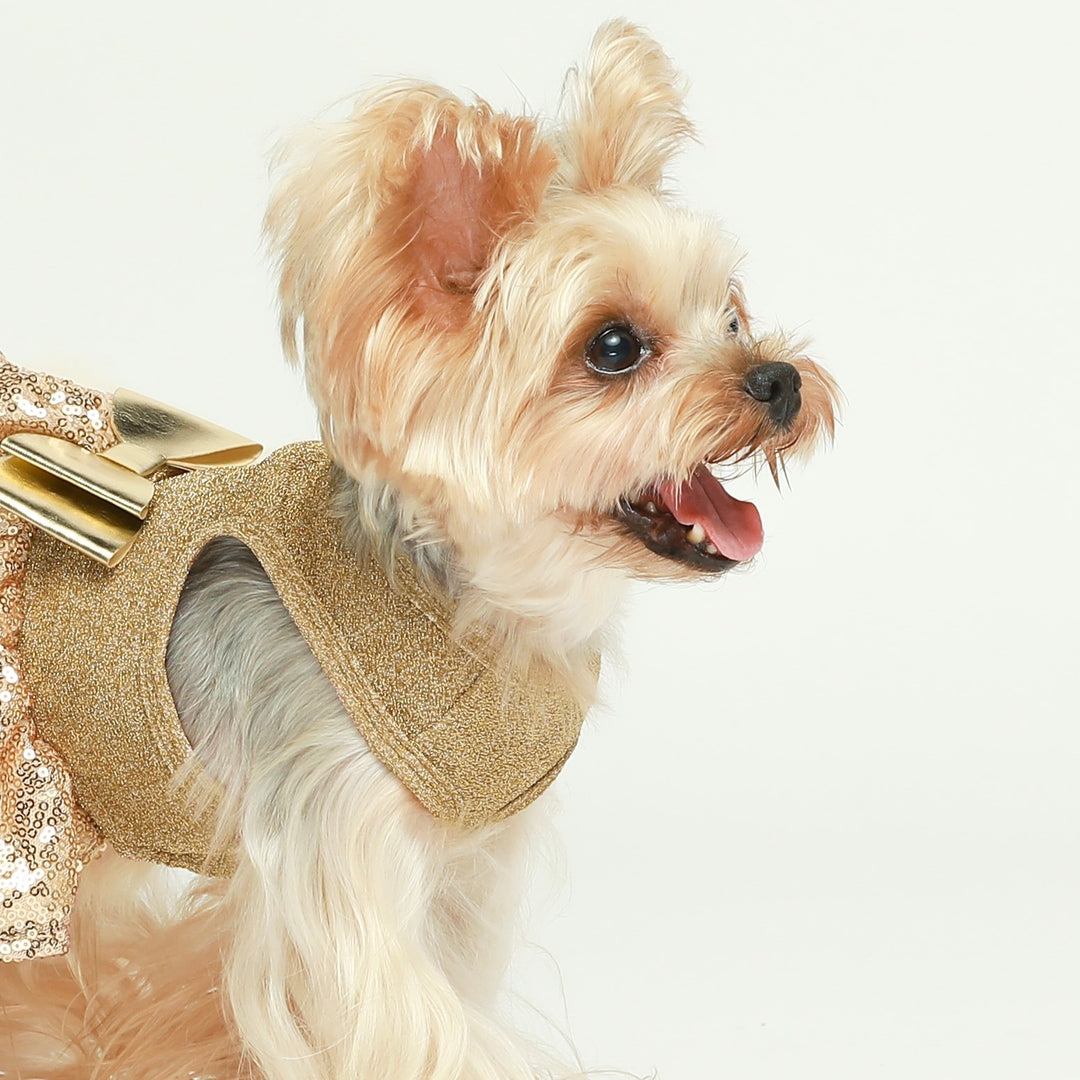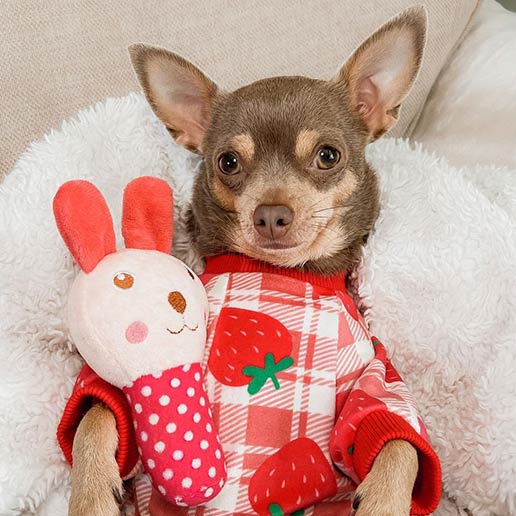Why Do Dogs Like Belly Rub? 5 Key Reasons to Understand
We all know that adorable sight - a happy dog rolled over on their back, paws dancing as they invite belly rubs from a loved human. What drives dogs wild for those satisfying tummy scratches? Understanding this common behavior better allows us to enrich our bonds. Let's explore 5 key reasons behind dogs and belly rubs!

Instagram: wakanda_shihtzu
Shih Tzu Looking Cute in Dog Pajamas
Instinctive Behavior From Puppyhood
Dogs inherit natural instincts to enjoy belly rubs from their ancestral breeds and pack mentalities. As puppies, having their mother dog or littermate puppies stroke their bellies while being groomed or nursing forms early positive memories. Rolling over to expose their stomachs shows the trust that reflects the safety of snuggling in an intimate family pack. These youthful experiences of nurturing belly touches get linked to similar affection from human owners later on.

Instagram: luna_mila_stella
French Bulldog Puppies in Elegant Dog Dresses
It Feels Good – The Pleasure Principle
Thanks to abundant sensory nerve endings blanketed across their core abdominal areas, dogs perceive belly rubs as blissful no different than humans enjoying massages. The sensual stimulation of these touch receptors triggers the release of oxytocin and endorphins which communicate pleasant sensations while lowering stress. Combined with inborn bonding mechanisms from puppyhood, this neurochemistry compounds positive perceptions of belly-directed stroking.

Canine Trust and Hierarchy
Wild canines protectively conceal vulnerable stomach regions housing vital organs. When domesticated dogs deliberately flip over to present their bellies for potential rubbing they demonstrate exceptional trust in their participating human. The submission of allowing sensitive access proves dogs accept and embrace owners as trusted leader figures. Reciprocating belly rubs strengthens the loving bond.

Instagram: mini.mabel.ween
Dachshund in Cozy Brown Pajamas Showing His Belly
Behavioral Communication in Dogs
Interactions around affectionate belly rubbing illustrate operant conditioning psychology principles with clarity. Dogs learn to associate offering their bellies with pleasurable pets as rewarding outcomes which positively reinforces repeating belly-up behaviors. Their happy body language further communicates an enthusiastic request for more as the feedback loop linking action to reward perpetuates itself, driving closer attachments.You might even find that your dog behaves differently when wearing clothes which makes it all more amusing and fun.

Instagram: wakanda_shihtzu
Shih Tzu Relaxing in a Fleece Dog Sweater
Temperature Regulation
In addition to the relational and developmental factors linked to belly rub joy, a physiological incentive also comes into play - temperature regulation. Understanding how dogs sweat and their unique cooling system is essential for their health, especially in warmer climates. Lacking sweat glands across most furry areas, dogs rely significantly on conductive abdominal skin surfaces to dissipate rising core heat. Belly fur ruffling serves conveniently to cool overheated dogs in warm weather, prompting more rubbing requests.

When Your Dog Wants a Belly Rub
Dogs have clear body language showing they want a belly rub, typically:- Rolling over onto their backs to expose their stomach, signaling "My belly is ready!"
- Stretching out their legs and putting their paws up in the air while on their back
- Playful little nibbles while looking at you upside-down
- Wiggling or awkwardly scooting on their backs closer to you to make sure you notice their belly.

Cute Dogs Sleeping in Matching Pink Pajamas Showing Bellies
These are all voluntary acts by the dog meaning they are giving consent and actively asking for belly rubs. Other signs your dog wants their belly rubbed:
- If they flip over and make eye contact with you while their belly is out
- Lightly pawing toward you while rolled over
- A big happy sigh while they roll onto their back as if saying "Finally!"

Cute Dog Relaxing by the Windows in Warm Turtleneck Pajamas
Knowing what to look for allows you to identify when dogs actively want belly rubs versus when they may not be in the mood. Make sure it's 100% their idea first!
How to Properly Give Your Dog a Belly Rub
Once your dog voluntarily offers up their belly:- Place your palm flat against their fur and make long, sweeping strokes down from their chest to their lower abdomen to hips. Using your whole hand makes it more enjoyable.
- Gently repeat scratching or rubbing all over the exposed belly area, focusing on direct skin contact through the fur. These repeated strokes are calming.
- Try rhythmic circular motions with light pressure or vigorous zig-zagging finger scratching. Observe your dog's reactions to guide where feels best.
- Let your dog's verbal and physical responses guide you to their preferred spots, strength, and scratching patterns. Every dog differs a bit on the perfect belly rub method!
Giving great belly rubs takes feedback, care, and affection! Make each opportunity tender and fulfilling for you both.

When Not to Rub a Dog's Belly
While most dogs adore belly rubs when given consentingly, several situations warrant caution and restraint:- Independent, abused, or previously neglected dogs often dislike or react negatively to physical handling as it invokes past trauma. Carefully monitor their comfort level and never touch them without clear permission.
- Dogs in pain from conditions like abdominal surgery or injury will likely find belly pressure highly unpleasant. Especially avoid rubbing areas presenting skin irritation, hot spots, or stitches.
- Elderly dogs prone to sickness or incontinence may not welcome stimulating touch on sensitive stomachs. Observe for signs of discomfort.
- Pregnant or nursing dogs can perceive abdomen attention around their maternal duties as threatening due to instinctive protectiveness.
While most pups delight in belly bonding when welcomed on their terms, restraint respects every dog's right to consent and physical autonomy. Carefully observe receptiveness and sensitivity.

Instagram: along.came.wally
Final Thoughts
In closing, understanding what compels dogs towards soliciting belly rubs allows us to share meaningful sensory affection within healthy bounds. After all the day's play and belly rubs, it's important to consider your dog's resting place.Determining where your dog should sleep at night comes down to comfort and the well-being of your pet. When welcomed through inviting body language, satisfying that belly itch offers mutual joy along with reinforced attachment security. Hopefully appreciating these roots of dogs and belly rubs empowers even stronger bonds thanks to the positive power of touch!















